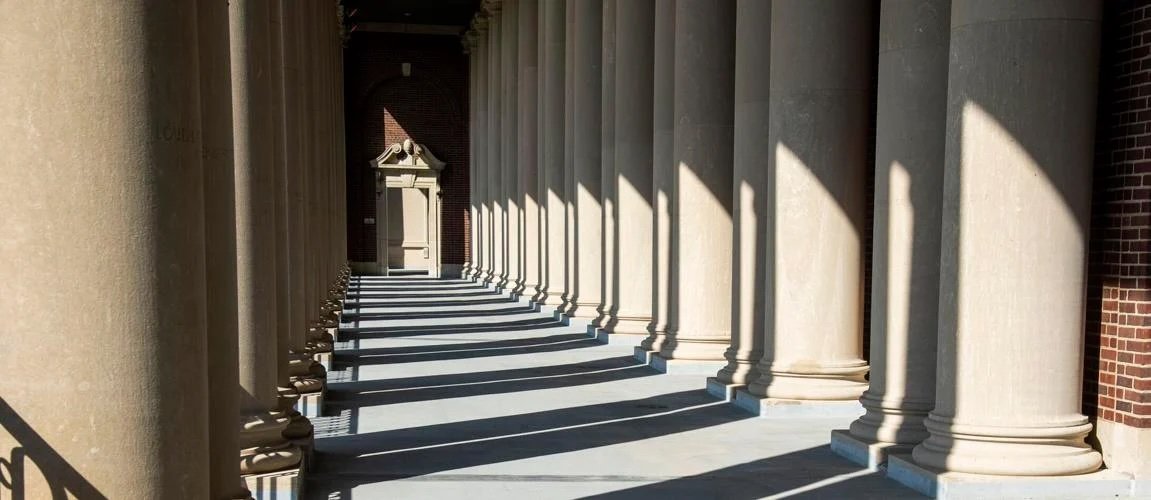Remembering the memorial in Illinois’ Memorial Stadium
In 1914, British author H.G. Wells’ book titled, “The War That Will End War,” became an idealistic term used for the hoped-for-result of the First World War that ended on Nov. 11, 1918—the date we now observe as Veterans’ Day—to honor and remember the service of all veterans.
By the spring of 1921, University of Illinois Athletic Director George Huff and football coach Robert Zuppke had decided to head up a fundraising campaign to provide money to erect Memorial Stadium to honor the 189 UI students and alumni who died in the war and to attain a football playing field.
Huff and Zuppke began the fundraising campaign to build the stadium on April 25, 1921, and reportedly received $700,000 in pledges. When the project was completed in 2023 by English Brothers Construction Co., $1.7 million had been raised to pay the bill, which would be more than $25 million in today’s money. Memorial Stadium was then dedicated on Oct. 18, 1924—a day that will live forever in Illinois football history.
Harold “Red” Grange received the opening kickoff and ran 95 yards for a touchdown against Michigan. Then he scored touchdowns with runs of 67, 56 and 45 yards. In the second half, Grange threw for a touchdown, his fifth of the game. Journalists have referred to Memorial Stadium as the “house that Grange built.” Many memorable football games have been played there since in the last 100 years. And a statue of Red Grange located on the west side of the stadium remembers him for all to see.
Some of the columns at Memorial Stadium that have the names of University of Illinois alumni and students who died in World War I inscribed on them. (News-Gazette photo)
The university just celebrated the 100th anniversary of Memorial Stadium over this past weekend of Oct. 18 and 19, aptly culminating in another victory over Michigan on the gridiron.
What is less known is that among the 200 limestone columns along the top of the stadium are the names of 189 students and alumni who died in World War I. That’s not to say that Red Grange shouldn’t be remembered for his outstanding game against Michigan. But those individuals should be remembered, too. With their sacrifices, those men and one woman helped preserve our freedom and democracy that was hard to come by back then and is still difficult to maintain today. Just imagine what they might have been like when they roamed the campus, the dreams they had about what a degree from the University of Illinois meant for their future. Probably not a lot different than how students feel today. But those students and alumni back then went off to war for duty and country and didn’t get to come back and live their lives, nor have the chance to fully achieve their potential.
The ideals of duty, honor, loyalty and sacrifice that they possessed are exactly the inspiration I think Huff and Zuppke were hoping to spark in the young Illinois athletes who would step onto that field in the future to engage in the competition of sports and to be their best, physically and mentally.
The names of those Illini who died are also noted at https://uiaa.org/veterans-memorial-project/, along with additional background information.
The site was created by the University of Illinois Alumni Association in 2002 when it initiated an effort to extend the original stadium dedication to include the names of students, alumni and faculty who have given their lives in subsequent U.S. military conflicts.
The Alumni Association commissioned the addition of large Bedford limestone tablets in the four tower vestibules leading to the colonnades. The names of an additional 948 known Illini military fatalities since World War I were inscribed on these tablets, which were quarried from the same Indiana site as the original colonnade columns.
The names were from wars and campaigns from the 1926-33 Second Nicaraguan Campaign and through the 2001-04 Operation Enduring Freedom. There were no known UI military deaths prior to World War I.
Joe Rank, retired vice president of membership at the University of Illinois Alumni Association, shared an interesting story about University of Michigan graduate Curtis G. Redden, whose name is on one of the columns. “He was an Illinois native and Michigan grad,” Rank said, “but that he ended up on a column in Memorial Stadium on the day that Illinois whomped Michigan and that Redden’s column was partially funded by Fielding Yost, who coached Michigan in that blowout, was a bit ironic.”
There is some irony—and naivete, no doubt—in thinking one war that occurred more than 100 years ago would be the last war. The huge cost war wages on humanity has not been enough to stop the conflicts.
In the dedication to his World War II novel, “The Thin Red Line,” that has been touted as one of the best combat novels ever written, a very cynical and war-weary James Jones wrote, “This novel is cheerfully dedicated to the greatest of all human endeavors, WAR and WARFARE; may they never cease to give us the pleasure that we need, or provide us with the heroes, the presidents and leaders, the monuments and museums which we erect to them in the name of PEACE.”

